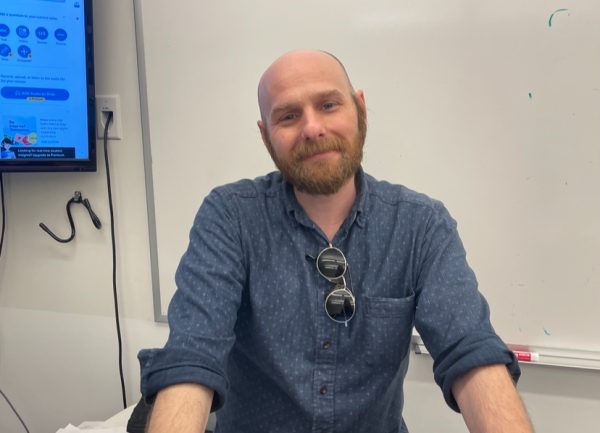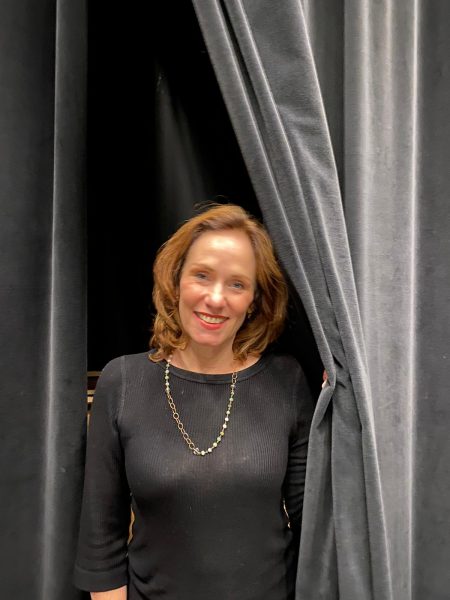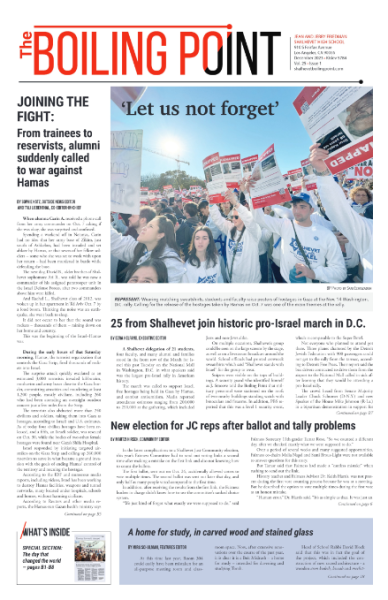‘Edge of 17’ breaks ground but is not groundbreaking
December 5, 2016
The New York Times said it took teenage movies to a “higher place.” Time Magazine applauded how perceptively it “dealt with teenage sex, and maybe even with sex in general.” And the Atlantic called it an “instant teen classic.”
But Edge of Seventeen, while a charming coming-of-age movie, actually failed when it came to everything it’s being so widely praised for. These mass media reviewers abandoned their usual standards – or maybe are just unable to recognize what’s real versus what’s fake when it comes to the lives of teens.
For one, the movie, written and directed by Kelly Fremon Craig, featured four main characters, all of whom are too attractive and too old to be playing teenagers. Hayden Szeto, who plays the main character’s love interest, Erwin, is over 30, and it shows. In a scene where he goes swimming, his glistening, hyper-muscular physique would have been fit for a Calvin Klein or protein powder ad. Teenagers are just not capable of developing that kind of figure in their high school years.
Hailee Steinfeld, who plays Nadine, the movie’s protagonist, is actually 19. Though not outrageously older than “the edge of 17,” Ms. Steinfeld is too attractive and too fashionably dressed for a girl who is supposed to be an outcast in her high school. Donning pleated plaid mini skirts, sheer black tights, and brand-name sneakers, if Nadine walked off set into an actual high school, she would find herself to be the center of constant compliments from other girls.
In this and many other ways, Edge of Seventeen zigzags between its goal to be fresh and groundbreaking and its retreat from this aspiration. Marketing cliches, worn-out character tropes and a routine script ultimately undermine what credibility it might otherwise have claimed as a picture of teenage life today.
Nadine, suffering from the death of her beloved father, must deal with being the sad and friendless counterpart to her golden boy brother, Adrian (played by Blake Jenner), as well as the open antipathy of her mother (Kyra Sedgwick). When Nadine catches her only friend, Krista (Haley Lu Richardson), in bed with her brother, her life takes an even deeper downturn. So does the movie.
The script launches into a slew of cliches. Nadine laments to her new confidante — her history teacher Mr. Bruner, played by Woody Harrelson — that she is an “old soul” who likes old music and old movies, and therefore cannot relate to any of the emoji-obsessed and social media-addicted kids at her school. She internet-stalks her crush, Nick, (Alexander Calvert), and then while ditching school accidentally sends him a salacious and embarrassing Facebook message.
When Nick sees the message, he texts Nadine to meet, but when they do he tries to have sex with her despite her visible discomfort. This scene was uncomfortable for the audience, but was probably the most realistically teenage and important part of the movie. Instead of the normal kicking and screaming typically shown in sexual assault scenes, this one was a good demonstration of California’s “yes means yes” law, and could easily be a part of real sex ed curriculums explaining the concept.
The rule, enacted in 2014, offers a definition of what it looks like for someone to agree or not to agree to sex. The latter may include kicking and screaming “no,” but non-consensual sex can also be the absence of a clear “yes” — as in the scene with Nick and Nadine.
Nadine tries to kiss him again, resulting in a repeat of the previous situation. When she says she just wants to get to know him, he tells her he “should have listened to [his] friends.” Though viewers are mentally screaming at Nadine to leave, it’s not uncommon for a lonely and confused teenage girl to bargain her sexuality, desires and dignity with a guy who she has been pining for for months.
So Nick is not Nadine’s ultimate love interest, but Erwin — played by Hayden Szeto — is. Erwin is a sweet, lovable nice guy, a common trope. But following the movie’s pattern, there’s a dark side to the familiar: his parents are dreadfully wealthy yet absent from his life for months at a time.
From watching trailers and advertising for this movie, you would have no idea that this interesting character exists in the plot, let alone holds such a significant part of it. Interestingly enough, Hayden Szeto is also the only actor of color in the entire movie.
It’s another example of how the film seesaws between antiquated cliches and progressive breakthroughs. While most American coming-of-age movies feature a good-looking, all white cast, this one could at least boast one Asian actor, and he plays an important role. The fact that he was not at all in any of the marketing of the film is both suspect and cliche.
So for the most part, Nadine is just another protagonist in another offbeat sad girl movie, but she still offers some new and true themes about the identity struggles of adolescence. Her persona perfectly exemplifies the ironic dissonance teenagers experience between narcissism and low self-esteem.
Nadine tells her brother that a twisted part of her thinks she’s better than everyone else because she’s the only one with “real problems.” But earlier in the movie, while resting her head on a toilet seat bowl from drunk-vomiting, she confesses that she has come to the unfortunate realization that she’s “gotta spend the rest of my life with myself.”
Edge of 17 provides a glimpse of hope for the future of teenage films, but it still falls short. In the future, filmmakers trying to create something legitimately relatable to young audiences should feature a more diverse, not to mention younger and less made-up, cast, and hold on to the more nuanced struggles and truths of teenagehood Edge of 17 courageously offers.














